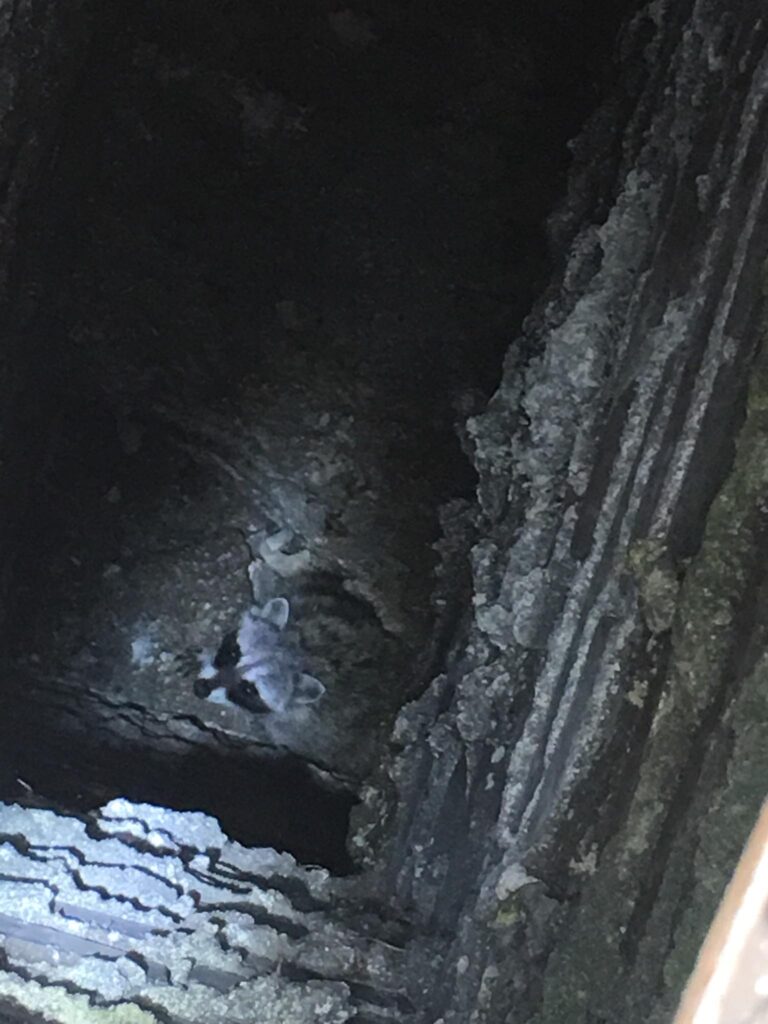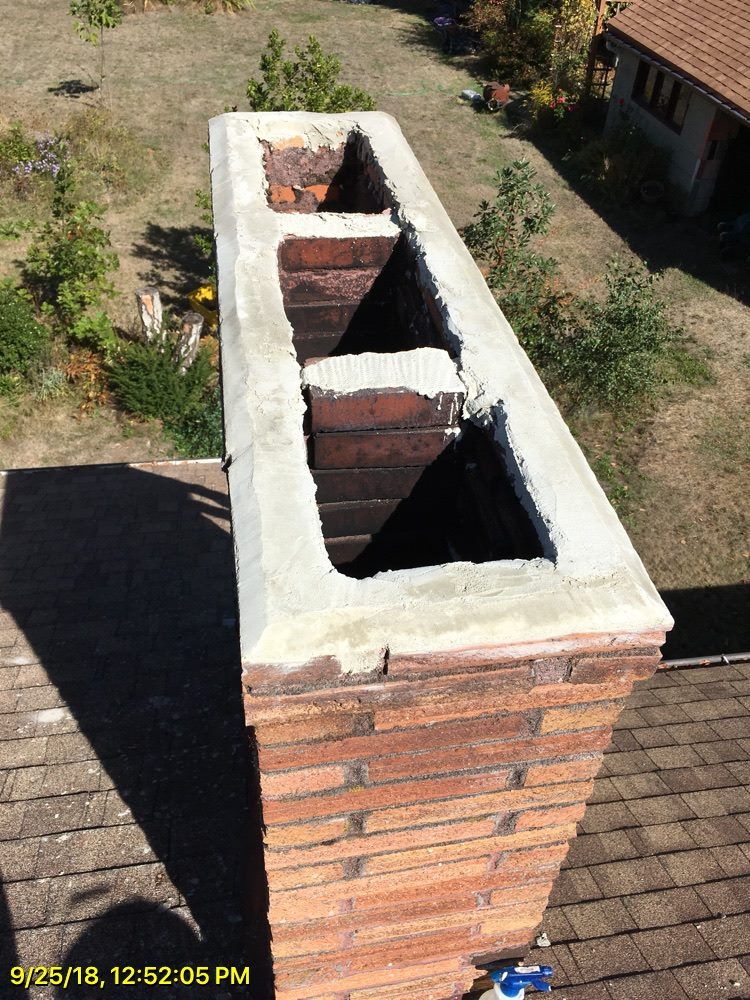
A raccoon’s natural denning location is the hollow of a tree. Chimneys provide all the same benefits to a raccoon for denning.
As raccoons commonly break into chimneys to raise young, noises like squeaking, purring, rustling, and whining are often heard through the night when infestations are present.
Even with chimney caps, raccoons can get inside of a chimney. Noticing a cap out of place can indicate a raccoon or other critter in your chimney. Sightings of raccoons in chimneys or on rooftops should also incite concern. In this case, these homeowners in Portland heard chattering and scratching coming from the chimney.
How NOT to Get Rid of Raccoons in Chimney
Do not set a fire to smoke out the raccoons. It can hurt the raccoons, and it is a fire hazard. If there is a raccoon den in the chimney, a fire can ignite the materials.
Don’t open the flue or the fireplace in an attempt to get the raccoons out of the fireplace. Without proper precautions, you will have a loose raccoon in the living space of your house. That significantly increases the risk of bites and scratches.
Raccoon in Chimney from Critter Control
Raccoons will leave the chimney for food and water. But they are nocturnal so this happens at night. If there is a female with young, the raccoons are ready to stay for a few months.
At Critter Control we will use a trap at the top of the chimney or one-way valve. We can trap and remove the raccoon harmlessly. If young are present, we can remove them by hand from the fireplace and either reunite them with the mother or find a local wildlife rehabilitator.
Exclusion Work for Raccoons in Chimney
After we humanely removed the raccoon from the chimney, we need to protect it from future infestations. We repaired the chimney and installed a new chimney cap to stop raccoons, squirrels, birds, and other pests from getting inside the chimney.



All photos courtesy of Critter Control of Portland